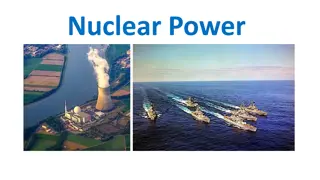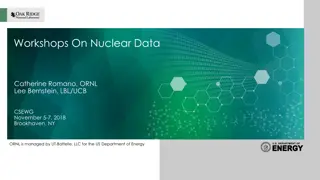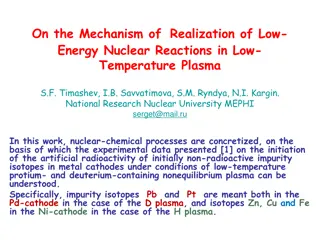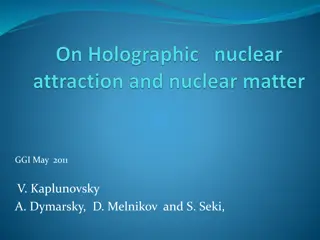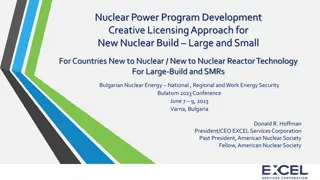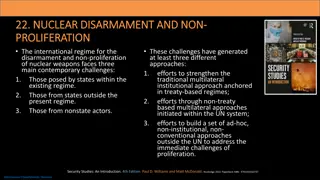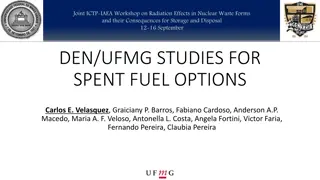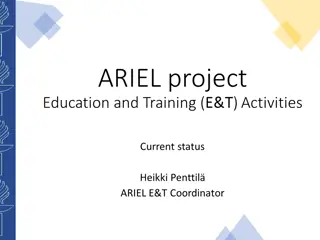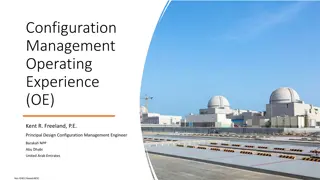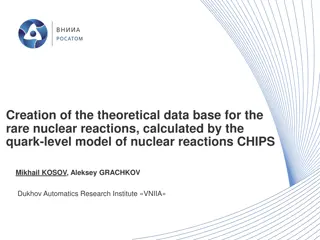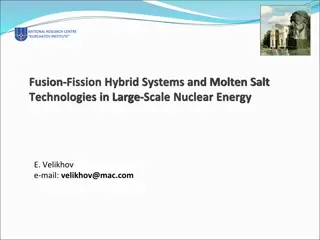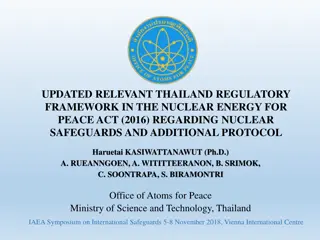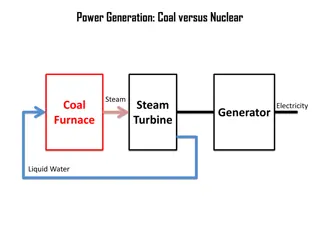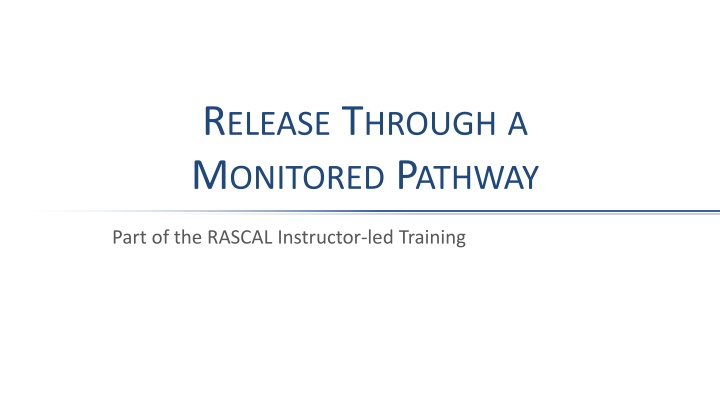
Monitored Pathway in Nuclear Power Plants
In nuclear power plants, effluent monitoring is crucial to detect and characterize releases of radionuclides. This scenario discusses a malfunction at the Wolf Creek Generating Station, leading to an effluent release through a monitored pathway. The release rates for noble gases, iodine radioisotopes, and particulates were reported, in compliance with Technical Specifications. Using RASCAL software and predefined meteorology data, the dose and potential consequences at different distances were calculated. The results highlight the importance of effective monitoring and response strategies in mitigating the impact of such incidents.
Download Presentation

Please find below an Image/Link to download the presentation.
The content on the website is provided AS IS for your information and personal use only. It may not be sold, licensed, or shared on other websites without obtaining consent from the author. If you encounter any issues during the download, it is possible that the publisher has removed the file from their server.
You are allowed to download the files provided on this website for personal or commercial use, subject to the condition that they are used lawfully. All files are the property of their respective owners.
The content on the website is provided AS IS for your information and personal use only. It may not be sold, licensed, or shared on other websites without obtaining consent from the author.
E N D
Presentation Transcript
RELEASE THROUGH A MONITORED PATHWAY Part of the RASCAL Instructor-led Training
MONITORED MIX - BACKGROUND When a nuclear power plant effluent monitor detects a release, the release is likely to be a mixture of many radionuclides. However, the effluent monitor cannot identity the specific radionuclides present. The effluent monitor provides detector count rates and a plant computer will be used to calculate/convert activity release rates for noble gases, radioiodines, and sometimes particulates. Monitored releases will be filtered so they should be mostly noble gases but with a small proportion of iodines and particulates.
MONITORED MIX - SCENARIO Wolf Creek Generating Station had been operating at 100% percent power when a malfunction occurred causing the plant to shutdown at 15:50. Approximately 10 minutes later (16:00), an effluent release through a monitored pathway (stack height 211 ft) was detected by plant operators.
MONITORED MIX - SCENARIO The effluent release rate was reported to be 950 Ci/s for noble gases, 12 Ci/s for iodine radioisotopes, and 0.3 Ci/s for particulates. . The plant s Technical Specification (TS) requires that the release duration must be limited to no more than 30 minutes.
YOUR TURNTO USE RASCAL Given the scenario excerpt below, run the entire case in RASCAL. Wolf Creek Generating Station had been operating normally when a malfunction occurred causing the plant to shutdown at 15:50. Approximately 10 minutes later (16:00), an effluent release through a monitored pathway (stack height 211 ft) was detected by plant operators. The effluent release rate was reported to be 950 Ci/s for noble gases, 12 Ci/s for iodine radioisotopes, and 0.3 Ci/s for particulates. The plant s Technical Specification (TS) requires that the release duration must be limited to no more than 30 minutes. Use predefined Standard Meteorology and ICRP 60/72. Dose at 1.0 mi Dose at 5.0 mi TED (rem) Child Thyroid CED (Sv)
MONITORED MIXTURES - RESULTS Dose at 1 mile Dose at 5 miles 0.63 0.14 TED (rem) 11.0 2.00 Child Thyroid CED (rem) Conclusions? Will this method work for multiple release paths? Likelihood Uncertainty


